
Also known as swedes or Swedish turnips, rutabagas resemble their turnip cousins, but the skin is pale yellow and the flavor is milder and sweeter. Although you can buy rutabagas in most supermarkets year round, peak season for this hardy root vegetable is late spring through autumn. A light, early frost doesn't harm rutabagas and actually accentuates the sweetness. Canning isn't recommended for rutabagas, but freezing maintains the quality and flavor.
Step 1
Wash the rutabagas thoroughly with a vegetable brush to remove dirt and grit, then trim the root-like bottoms and the green, leafy tops.
Step 2
Cut the rutabagas into uniform pieces measuring about 1/2 inch in diameter.
Step 3
Fill a large pot or kettle with water, then bring the water to a full boil. Use approximately 1 gallon of water for every pound of rutabagas to ensure the water is deep enough to cover the rutabagas.
Step 4
Place the rutabaga pieces in a steamer basket or colander, then submerge the rutabagas in the boiling water. With the burner on high, bring the water back to a full boil.
Step 5
Cover the pot and set a kitchen timer for 3 minutes as soon as the water returns to a full boil. Blanching rutabagas in boiling water prevents the vegetables from ripening further and helps maintain the color, flavor and nutritional content.
Step 6
Remove the pot from the heat as soon as the timer rings, then immerse the rutabagas immediately into a bowl of cold water. Don't blanch the rutabagas longer than the recommended time -- the vegetables should be slightly tender but not cooked.
Step 7
Allow the rutabagas to remain in the cold water for about 3 minutes, then drain thoroughly.
Step 8
Place the cooled rutabagas in airtight freezer containers, filling the containers to about 1/2 inch from the top. Label the containers, noting the date and the contents. Alternatively, use resealable plastic freezer bags.
Step 9
Place the containers in the freezer in a single layer to speed freezing. Once the rutabagas are fully frozen, stack the containers to save freezer space. Rutabagas retain quality eight to 12 months in a freezer set at zero degrees Fahrenheit or below. Although quality declines after that time, the vegetables are still safe to eat as long as they remain frozen.
Related Articles
How to Preserve Kohlrabi
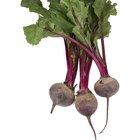
How to Freeze Fresh Beets

How to Slow Cook Pork Chops & Vegetables

How to Parboil Artichokes
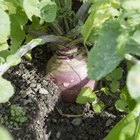
How to Cook Rutabaga in the Microwave
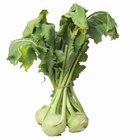
Ways to Cook Kohlrabi
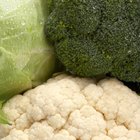
How to Steam Cauliflower & Broccoli

How to Freeze Edamame Soybeans

How to Blanch, Peel, & Freeze Whole ...

How to Freeze Dewberries

How to Freeze Carrots & Turnips
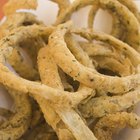
How to Deep Fry Vegetables With Batters

How to Freeze Fresh Asparagus

How to Freeze Empanadas

How to Blanch Cucumbers

How to Freeze Romanesco

How to Juice a Daikon Radish

How to Roast Radishes, Parsnips, ...

How to Mince Celery

How to Freeze Raw Zucchini
References
- The Deluxe Food Lover's Companion; Sharon Tyler Herbst, Ron Herbst
- University of Alaska Fairbanks Cooperative Extension Service: Home Freezing of Vegetables
- University of Georgia Cooperation Extension, National Center for Home Food Preservation: Freezing Rutabagas
Tips
- Thawing frozen rutabagas before cooking isn't necessary and may result in mushy vegetables. Cook rutabagas from the frozen state to maintain flavor and texture.
- Mashed rutabagas freeze well. Mash the vegetables immediately after blanching. Set the pot of mashed rutabagas in a large bowl of cold water to cool, then package and freeze.
Writer Bio
M.H. Dyer began her writing career as a staff writer at a community newspaper and is now a full-time commercial writer. She writes about a variety of topics, with a focus on sustainable, pesticide- and herbicide-free gardening. She is an Oregon State University Master Gardener and Master Naturalist and holds a Master of Fine Arts in creative nonfiction writing.
Photo Credits
Jupiterimages/Comstock/Getty Images